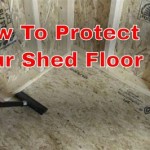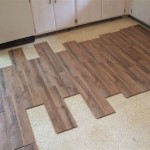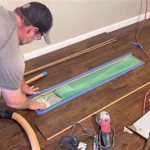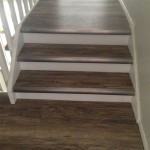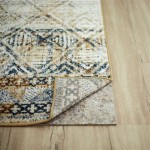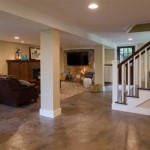Add Value To Your Home With Wood Flooring In Tampa, Florida, USA
For homeowners in Tampa, Florida, considering home improvements, wood flooring represents a significant investment with potential returns. The climate of Tampa, coupled with regional preferences, influences the choice of flooring materials and their impact on property value. Understanding the nuances of wood flooring options, installation, and maintenance is crucial for maximizing the benefits of this upgrade.
Understanding the Tampa Market and Wood Flooring
Tampa's housing market is dynamic, reflecting a blend of traditional styles and modern trends. Wood flooring is widely recognized as a desirable feature, contributing to a home's aesthetic appeal and perceived quality. Real estate agents frequently highlight wood floors as a selling point, indicating its positive influence on buyer interest and potential sale price. However, the specific impact on property value depends on several factors, including the type of wood, the quality of installation, and the overall condition of the home.
The subtropical climate of Tampa presents unique challenges for wood flooring. High humidity levels can cause wood to expand and contract, leading to potential issues such as warping, cupping, and gapping. Therefore, selecting wood species and installation methods that are well-suited to the local climate is essential for long-term durability and performance. Engineered hardwood, with its multi-layered construction, is often preferred over solid hardwood due to its greater dimensional stability in humid environments. Furthermore, proper ventilation and moisture control within the home are vital for maintaining the integrity of wood floors.
The aesthetic preferences of Tampa homeowners also play a role in the selection of wood flooring. Light-colored woods, such as oak and maple, are popular choices for their ability to brighten spaces and create a sense of openness. These lighter tones complement the coastal aesthetic prevalent in many Tampa homes. Darker woods, such as walnut and mahogany, can add a touch of elegance and sophistication, but may require careful consideration of lighting and room size to avoid making spaces feel smaller. Ultimately, the choice of wood species should align with the homeowner's personal style and the overall design of the home.
Selecting the Right Type of Wood Flooring
The decision to install wood flooring entails navigating a range of options, each with distinct characteristics and price points. Solid hardwood flooring consists of planks made from a single piece of wood. It offers a classic look and can be refinished multiple times, extending its lifespan. However, solid hardwood is more susceptible to moisture damage and may not be suitable for installation in basements or areas with high humidity. Its price is typically higher than other options due to the material cost and specialized installation requirements.
Engineered hardwood flooring comprises a thin layer of hardwood veneer bonded to a core of multiple layers of plywood or fiberboard. This construction provides greater stability and resistance to moisture compared to solid hardwood. Engineered hardwood is available in a wide variety of wood species, finishes, and plank sizes, offering flexibility in design. It can be installed in most areas of the home, including basements, and is often less expensive than solid hardwood. However, the number of times engineered hardwood can be refinished is limited by the thickness of the veneer layer.
Laminate flooring, while not technically wood flooring, is often considered as an alternative. Laminate consists of a photographic image of wood grain laminated onto a composite core. It is highly durable, scratch-resistant, and easy to clean, making it a practical choice for high-traffic areas and homes with pets. Laminate flooring is also the most affordable option. However, it lacks the authentic look and feel of real wood and cannot be refinished. Its impact on property value is generally less significant than that of solid or engineered hardwood.
The choice of wood type, such as oak, maple, hickory, or bamboo, further influences the appearance, durability, and cost of the flooring. Oak is a versatile and widely available option that offers a good balance of affordability and durability. Maple is known for its light color and smooth grain, creating a clean and modern look. Hickory is a dense and durable wood with a distinctive grain pattern, suitable for high-traffic areas. Bamboo is a sustainable and eco-friendly option that offers a unique aesthetic. The selection of wood type should consider the desired aesthetic, the level of traffic the flooring will endure, and the budget constraints of the homeowner.
Installation and Maintenance for Long-Term Value
Proper installation is crucial for ensuring the longevity and performance of wood flooring. Improper installation can lead to problems such as squeaking, buckling, and unevenness, which can detract from the value of the home. It is recommended to hire a professional flooring contractor with experience in installing wood flooring in Tampa's climate. A professional installer will assess the subfloor, ensure proper moisture levels, and use appropriate installation techniques to prevent future problems.
Subfloor preparation is a critical step in the installation process. The subfloor must be level, clean, and dry before installing wood flooring. Any imperfections in the subfloor should be addressed to prevent unevenness and potential damage to the flooring. Moisture barriers may be necessary to protect the flooring from moisture rising from the subfloor. The type of subfloor, whether concrete or wood, will influence the installation method and the materials used.
The installation method depends on the type of wood flooring and the subfloor. Solid hardwood is typically nailed or glued down to the subfloor. Engineered hardwood can be nailed, glued, or floated over a foam underlayment. Floating installations are quicker and easier but may not provide the same level of stability as nailed or glued installations. The appropriate installation method should be determined in consultation with a flooring professional.
Regular maintenance is essential for preserving the beauty and value of wood flooring. This includes sweeping or vacuuming regularly to remove dirt and debris, cleaning spills promptly to prevent staining, and using appropriate cleaning products designed for wood floors. Avoid using excessive water or harsh chemicals, as these can damage the finish and warp the wood. The use of area rugs in high-traffic areas can help protect the flooring from wear and tear. Consider refinishing the floors every few years to restore their original luster and address any scratches or damage. The specific maintenance requirements will vary depending on the type of wood flooring and the finish applied.
Maintaining consistent humidity levels within the home is particularly important in Tampa's climate. Using a dehumidifier during humid months can help prevent excessive moisture buildup, while a humidifier during dry months can prevent excessive dryness. Maintaining a relative humidity level between 30% and 50% is generally recommended for wood flooring. Proper ventilation and air conditioning can also help regulate humidity levels. Taking these precautions can significantly extend the lifespan of wood flooring and prevent costly repairs.
Beyond climate control, protecting wood floors from physical damage is crucial. Felt pads should be placed under furniture legs to prevent scratches and dents. Avoid wearing shoes with high heels or cleats on wood floors. Regularly inspect the flooring for any signs of damage, such as scratches, gouges, or water stains, and address them promptly to prevent further deterioration. Promptly repairing any leaks or plumbing issues can also prevent water damage to the flooring. By taking these proactive measures, homeowners can maintain the beauty and value of their wood floors for years to come.
Ultimately, adding wood flooring to a home in Tampa, Florida can be a valuable investment. Strategic planning, informed material selection, professional installation, and diligent maintenance are vital components in ensuring a positive return on that investment.

Hardwood Flooring Features Benefits Tampa Bay Fl Bob S Carpet And

Do Hardwood Floors Increase Home Value Roi Cost

Can Installing Hardwood Floors Raise Your Home S Value 50floor

Can Installing Hardwood Floors Raise Your Home S Value 50floor

All About Flooring Fl Best Contractors In Tampa

Hardwood Flooring Features Benefits Tampa Bay Fl Bob S Carpet And

Tampa Hardwood Floors Wood Flooring Company Free Quote

What Kind Of Flooring Increases Home Value A New Owner S Primer

Hardwood Flooring Features Benefits Tampa Bay Fl Bob S Carpet And

Flooring Servicing Tampa Fl Marcal Pro
See Also
